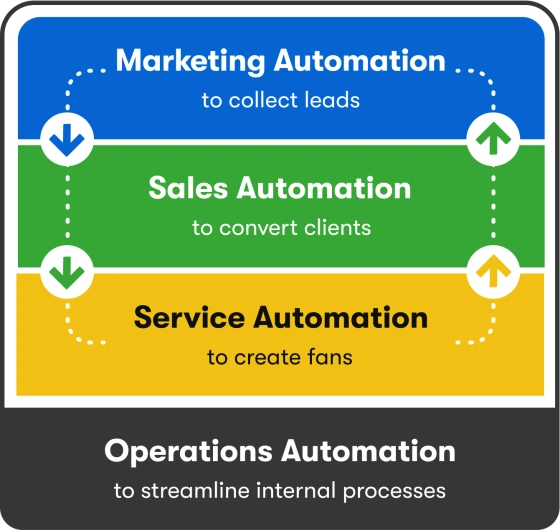Sales Automation is the use of software to automate the repetitive, manual tasks involved in converting leads and prospects into clients. This allows your sales team to focus more on closing sales and getting paid.
With Sales Automation tools, you can:
- Automate follow-ups
- Manage your sales pipeline
- Easily train new sales team members with a repeatable and scalable system
- Manage quotes, invoices and payments in one place
- Send overdue payment reminders to clients to get paid without the awkward conversations
Sales Automation is the second category within Small Business Automation, which is eliminating repetitive tasks across your entire business through the use of automation software.
Small Business Automation includes:
- Marketing Automation
- Sales Automation (you are here!)
- Service Automation
- Operations Automation

14-day free trial. No credit card required.
